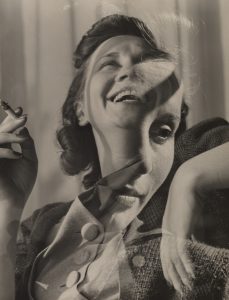
By Sandra Schulman
Marilyn Monroe looking lost. Society ladies scowled at by bums. A young Patti Smith leans on an androgynous Robert Mapplethorpe.
These are just some of the remarkable famous images in the exhibit Presence: The Photography Collection of Judy Glickman Lauder, now running at the Norton Museum of Art through March 10. Judy and Leonard Lauder are Palm Beach residents and major supporters of the Norton.
The exhibition features the work of more than 50 artists exploring the concept of presence and humanity, including work by photographers Richard Avedon, Nan Goldin, Gordon Parks, and many more. The title of the exhibition comes from a quotation by the French writer Roland Barthes, who was a writer and theorist known for his work in photo theory, among other things. The full quote is “Photographs are certificates of presence.”
“Interesting, right?” asks Lauren Richman, William and Sarah Ross Soter Curator of Photography at the Norton. “In my interpretation, it’s more mechanical like verification, a certificate of something that has existed, whether that’s a person or a moment or a place. But it’s also very conceptual. Photographs can have very particular capacity to impact us. And that presence is also integral to our understanding of the medium and of images.”
“I think it’s an excellent opportunity for our visitors to see a fantastic selection of the 20th-century canon,” says Richman. “It’s a history of photography course in an exhibit, thanks to Mrs. Lauder’s vision. This is really her heart, collecting what she’s drawn to, what interests her and affects her. And she has a fantastic eye. So we’re very lucky to be able to open this exhibition here.”
There are very famous images here and then some that viewers have probably never seen before by the top photographers.

The classic Richard Avedon portrait of Marilyn Monroe in her prime in 1957, her golden curls, full makeup and a black plunging sequin dress contrast jarringly with her sorrowful expression, eyes averting the camera’s invasive gaze.
A Nan Goldin photo, Self Portrait in Kimono with Brian, New York 1983, is darkly intimate with golden light and deep shadows. A photo by Leon Levinstein from 1966, Coney Island, shows a Black couple in a sweet street embrace, styling with their hip clothing and jaunty hats.
“It’s really quite extraordinary,” Richman says. “It’s a who’s who in a way, it’s both this impactful, general understanding of 20th-century history of photo, but also very personal and unique to Judy’s eye and interest. I believe it’s over 600 photographs total in her collection and they were all a promised gift to the Portland Museum of Art in Maine. This exhibition comes to us from that museum.”
The Norton has been showing a lot of a top-notch photo shows the last few years, and obviously the interest is there, whereas years ago, museums were barely showing photos at all. What is Richman’s feeling on that?
“I think we have a very supportive community of folks who are interested in photography,” she says. “And I think part of that is due to the medium itself. It’s a democratic medium. It’s one that is very accessible to a wide range of people with a wide range of interests. And I believe that photos are works of art that everyone can relate to in some way. We can think back to family photo albums and the ability for photographs to access our emotions and our memories. I think it’s a very human medium in that sense.”
It can also be generations that have grown up with so many magazines and TV images, more than with paintings and sculpture.
“Exactly, it is mass media,” Richman says. “Whether we like it or not, we’re surrounded by photographs and by images. More than ever, that probably plays into a lot of the interest and familiarity with a lot of these images, ‘Life’ magazine and things that we grew up with.”

What are some of Richman’s favorite images in the show?
“That is near impossible,” she says. “I think there is an unbelievable, beautiful portrait of Agnes Martin by Diane Arbus. I think it just positions Martin in a way that really coincides with her own artistic practice. There’s something a bit eerie about it, but also something quite personal as well. I think that’s true of a lot of the photographs in the show.
“Like Richard Avedon’s photograph of Marilyn Monroe, this unbelievably huge historical figure. And yet, we see this portrait of her so intimate and you can see the vulnerability in her face and in her expression. And it’s a really startling photo still. The WeeGee is too. It’s kind of a funny one for Palm Beach with the society women.”
Presence: The Photography Collection of Judy Glickman Lauder runs through March 10 at the Norton Museum of Art in West Palm Beach. For tickets and hours, visit norton.org.